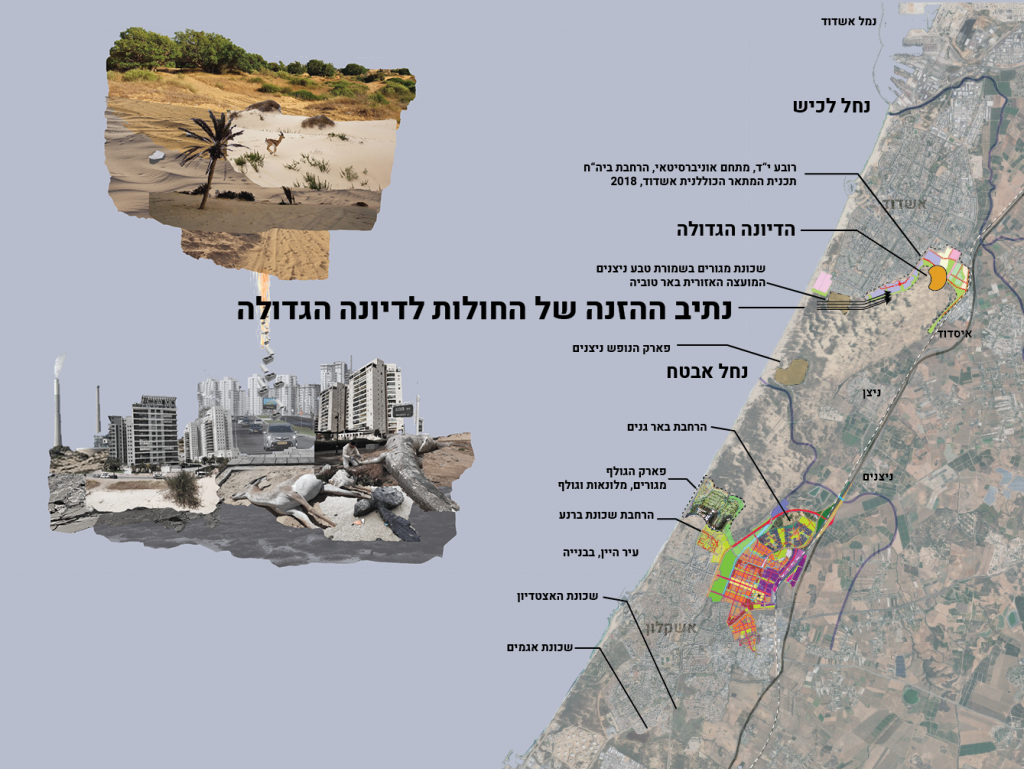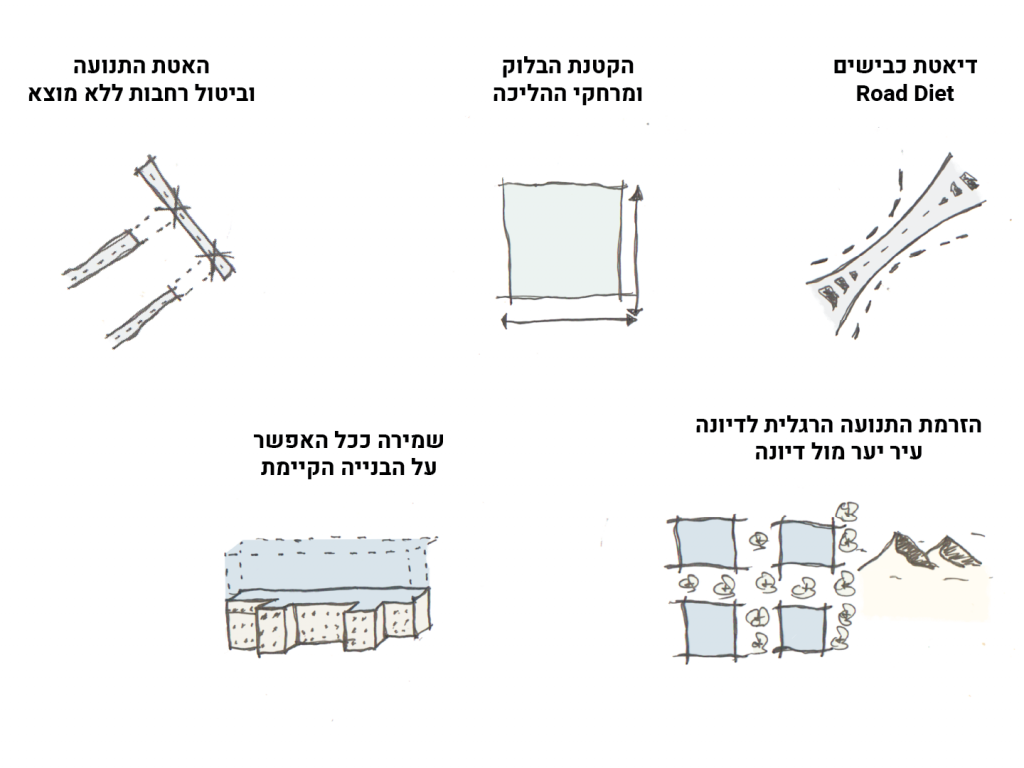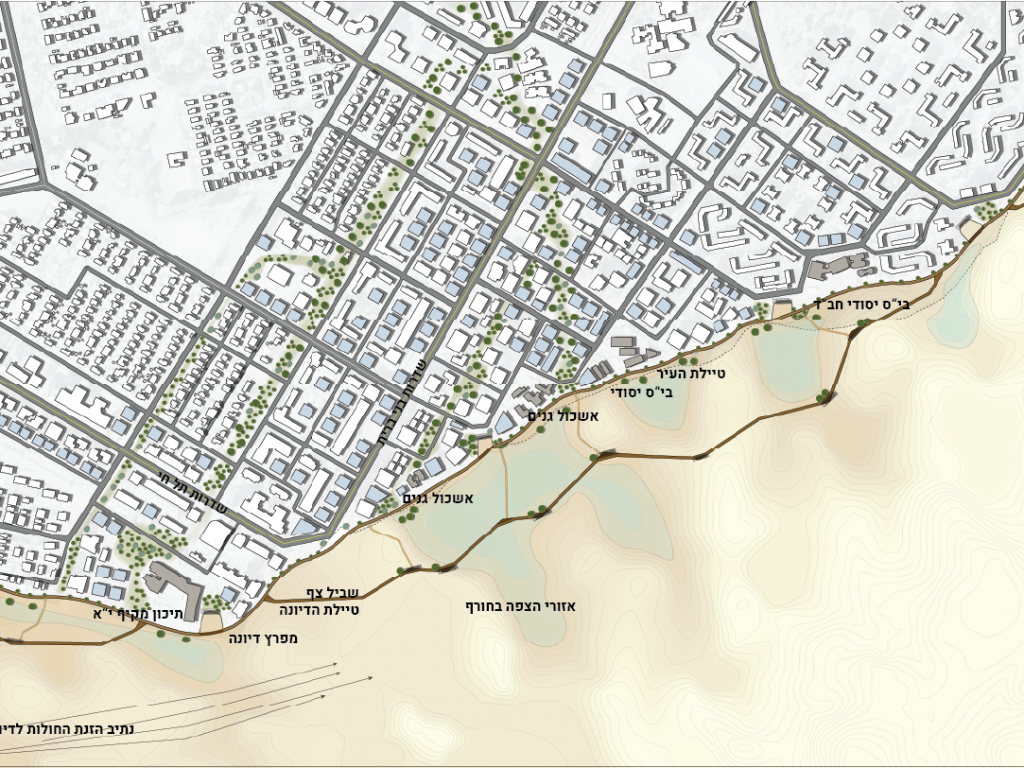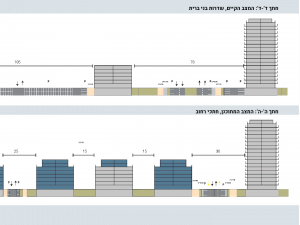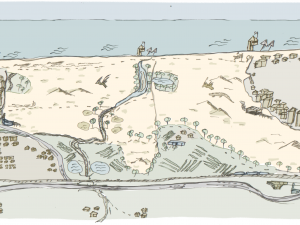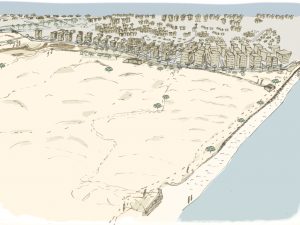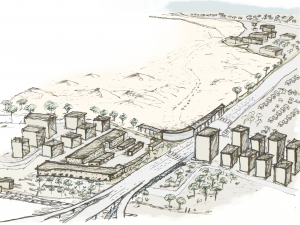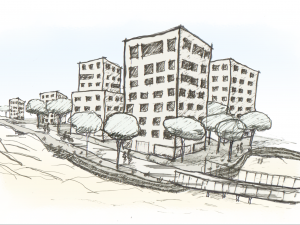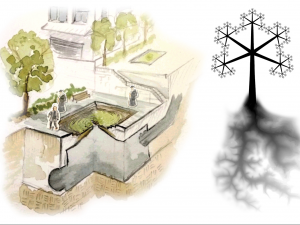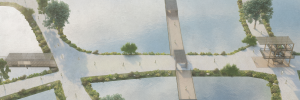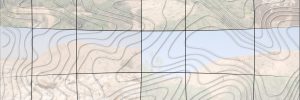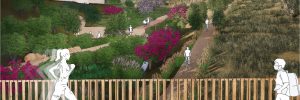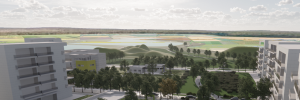Dunefront
More than two thirds of the sands in Israel were damaged since 1948. As for today, Nitzanim sands is the biggest and last remnant of the coastal sands to remain in Israel. Its 20,000 Square Kilometers of sands are situated between the cities of Ashdod to the north, and Ashkelon to the south. Evtah stream, which divides the area in the center, creates a unique landscape: natural stream away from any urban development, situated between moving dunes. The Nitzanim area is home for several endangered andemic species, which includes the Mountain Gazelle and the Varanus griseus, the largest lizard found in Israel.
During the last several years, the Nitzanim area is threatened by development plans from all directions: Ashkelon plans a new Golf park with a residential neighborhood, and Ashdod plans a new city plan and new neighborhoods right on the Grand Dune, which is adjacent to the city today. The whole region is in a tipping point: building more in Nitzanim could block the sand flow to the dunes, in particular the Grand Dune next to Ashdod, and destroy the natural habitat for the andemic species, which could cause to their extinction. In addition, it could cause to the extinction of the last wide sand dunes found on the coast of Israel.
My project deals with stopping the urban sprawl towards the dunes, by suggesting a new relation between the cities and their near open space and nature. The project proposes a new definition of a Dunefront, as of Waterfront which is commonly known, that could change the existing relation of the city and its close nature, between humans and sand dunes.



